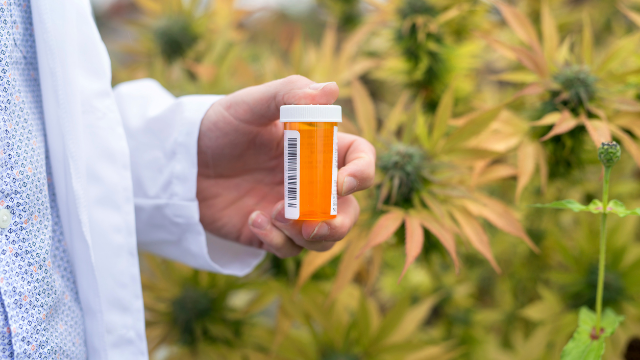You are here
Home 🌿 Cannabis Technology News 🌿 Cutting Corners: Dry Labbing in the Cannabis Testing Industry 🌿Cutting Corners: Dry Labbing in the Cannabis Testing Industry

It’s hard to imagine an analytical test without lab work, but that’s just what dry labbing means. In some cases—increasingly few—samples of cannabis get certified, as if they were tested, when nothing was really done, no wet-lab science was performed. Instead, these samples get labeled with characteristics that no one really measured. Put very bluntly, dry labbing is lying—making up data about what’s in a product rather than testing it. For medical use, dry labbing is dangerous, because someone could get a higher dose than expected or not enough of the medicine they rely on. On top of that, it’s fraud for both medical and recreational cannabis products.
“In California, dry labbing is not very common at all,” says Robert Martin, co-founder and Chief Operating Officer at CW Analytical Laboratories. “In the early days, we saw some of it, before there were associations—like the Association for Commercial Cannabis Labs, or ACCL—and lab accreditation.” He adds, “Labs are getting more mature and more experienced.”
Despite the dwindling occurrence of dry labbing, it gave the cannabis industry a bad name at the start. To change that image, the ACCL preaches against dry labbing. “It’s an egregious miscarriage of what is supposed to be done,” Martin says. “We wouldn’t accept that from a member of the ACCL.” If a member of that group did dry lab, it would probably get suspended or subjected to disciplinary action.
Other inaccuracies
Certainly, some cannabis products still get labeled from dry labbing alone. As Jeffrey Raber, Chief Executive Officer at The Werc Shop, says “Dry labbing is very hard to detect.” Still, he agrees with Martin that it’s not being done much anymore. Nonetheless, other analytical challenges remain.
“A far bigger issue is inaccurate results,” Raber says. To ensure quality, a producer should be able to produce a chromatogram from analyzing a product. Even then, the results could be off. “Some labs don’t seem to be able to prepare the samples right or run the equipment properly or they miss contaminants,” Raber says.
Both dry labbing and inaccurate results produce misinformation. Even worse, dangers can arise from more than getting the cannabis concentration wrong. Missing contamination, for example, could lead to selling a product that contains dangerous bacteria. “That could be really immediately harmful,” Raber explains.
A simple solution
As in other industries, simple solutions go a long way. “Proficiency testing and regulations requiring lab audits by certifiers is the solution,” Raber notes. “States have begun implementing these safeguards and continue to strengthen them, as well.”
Although some states, like California, can claim high standards for cannabis products, that can’t be said for every location. “I’ve heard about dry labbing complaints in Arizona and Washington,” Martin says.
Certainly, being an immature industry creates part of the problem. Some companies might not know the right way to analyze samples or lack trained technicians. As the industry matures, more companies will set up the right analytical techniques or send samples to trustworthy labs. Indeed, companies that don’t do that will get what one could call weeded out.
“Sooner or later, a bad deal shows itself,” Martin says. “If a producer is using dry labbing, someone else will pick up the product, test it and the differences will be like night and day.” As the cannabis industry matures, customers will find the reliable companies, which will prosper as others fall by the wayside.
Like any industry, consumers expect a safe product that contains the components at the levels listed on the label. Only then can an industry produce reliable products. Most people in the cannabis industry take analytical testing very seriously. As Martin concludes, “We help people every day, and it makes me feel better that the products are safe.”
420 Intel is Your Source for Marijuana News
420 Intel Canada is your leading news source for the Canadian cannabis industry. Get the latest updates on Canadian cannabis stocks and developments on how Canada continues to be a major player in the worldwide recreational and medical cannabis industry.
420 Intel Canada is the Canadian Industry news outlet that will keep you updated on how these Canadian developments in recreational and medical marijuana will impact the country and the world. Our commitment is to bring you the most important cannabis news stories from across Canada every day of the week.
Marijuana industry news is a constant endeavor with new developments each day. For marijuana news across the True North, 420 Intel Canada promises to bring you quality, Canadian, cannabis industry news.
You can get 420 Intel news delivered directly to your inbox by signing up for our daily marijuana news, ensuring you’re always kept up to date on the ever-changing cannabis industry. To stay even better informed about marijuana legalization news follow us on Twitter, Facebook and LinkedIn.





